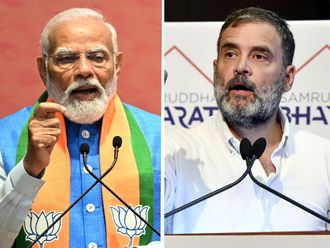New Delhi: It’s official now. Delhi has emerged as the second most populous city of the world.
According to a United Nations report released on Thursday, the population of Delhi has almost doubled since 1990 and is currently at an estimated 25 million people.
Although the basis of the UN report is not yet known, the report has been received here with some amount of scepticism considering the 2011 census put Delhi’s population at 16.75 million and the overall population growth rate declined substantially due to the growth of satellite towns such as Gurgaon, Faridabad (both in Haryana state) and Noida and Ghazaibad (both in Uttar Pradesh).
The UN report places Delhi behind Tokyo, which with 38 million people continues to be the most populous city.
What is alarming is the forecast that while Tokyo’s population by 2030 would decline to 37 million, Delhi is poised to almost catch up with it with an estimated population of 36 million in the same year.
An ancient city that came up in the 6th century BC, Delhi’s witnessed the maximum 90 per cent growth in its population between 1941 and 1951 when its population grew from 917,939 in 1941 to 1.74 million in 1951, mainly on account of large scale of migration into the city that followed India’s partition in 1947.
A million crossed over from the areas that became Pakistan and most opted to settle down in Delhi expecting better opportunities. The influx of refugees changed Delhi’s quintessentially Muslim culture with Punjabi culture becoming the new identity of the Indian capital city.
The trend continued in the subsequent decades as people from other parts of the country came to Delhi with the next four decades registering over 50 per cent growth every 10 years. While the population growth between 1991 and 2001 came down to 46.3 per cent, the reverse migration from Delhi to satellite towns and cities resulted into the population growth dipping down to 21.6 per cent in 2011.
“We are not sure if the UN report incorporated populations of the NCR (national capital region) as well,” said Satish Solanki, an economist. NCR was created to decongest Delhi and now comprises several towns of Haryana, Uttar Pradesh and Rajasthan.
The UN report further predicts that India would add the highest number of people to its urban population by 2050, beating even China. While India is expected to add 404 million to its urban population between 2014 and 2050, China is projected to add a mere 292 million to its urban population.
Mumbai, which with an estimated population of 21 million in 2014, would have a population of 28 million in 2030, taking it from the current 6th to the 4th most populous city of the world. The population explosion, however, does not seem to bother Indian authorities.
Prime Minister Narendra Modi had recently termed it as an opportunity.
“We look at urban centres as a burden, a challenge, not opportunity, even though that is where the growth is,” Modi said while releasing a book on India’s future development. The first budget of the Modi government, presented in the parliament by Finance Minister Arun Jaitley on Thursday has since taken forward Modi’s growth model with the announcement of provisions to set up 100 new smart cities with budgetary provisions of Rs70.6 billion (Dh4.3 billion) saying that since a large number of Indians continue to migrate to cities, they deserve a better deal.












